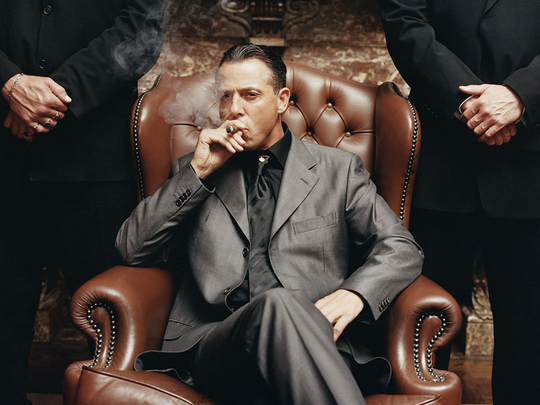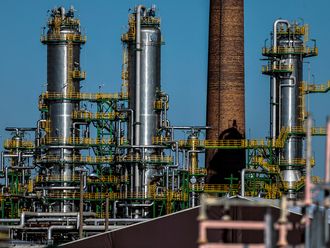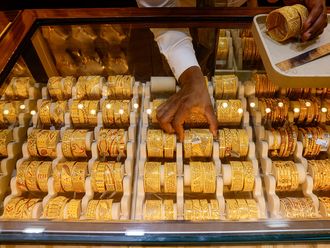
One of the many reasons why the ultra-wealthy are getting richer every year is that they know exactly where to put their money.
The world’s richest, about 1 per cent of the world’s population, have accumulated so much money that their combined cash and assets now represent 48 per cent of the global wealth. Analysts say that, by 2016, the small wealthy elite will make more millions, which when combined, will be equivalent to more than half of everyone’s money and assets put together.
It’s not that the remaining 52 per cent of the global wealth is distributed among the average-income earning citizens. According to Oxfam, almost all of the remaining 52 per cent of global wealth are in the coffers of the rest of the richest people in the world, which is just about 20 per cent of the population.
The rest of the majority, about 80 per cent of the population, own only 5.5 per cent of the world’s wealth. Their average wealth? It’s $3,851 (Dh14,000) per adult, which is 1/700th of the average wealth of the 1 per cent.
Winnie Byanyima, executive director of Oxfam International, says the scale of global inequality is quite simply staggering and despite calls for eradicating poverty, the gap between the rich and the poor just keeps getting wider each year.
Oxfam’s research paper sheds light on how the super rich invest their money. According to Oxfam, "there are a few important economic sectors that have contributed to the accumulation of wealth of these billionaires."
• They invest in the financial sector
According to the report, a good number of the richest billionaires like Warren Buffett, George Soros or Michael Bloomberg have invested their money in the financial and insurance sectors and seen their accumulated wealth grow by 15 per cent in a single year, from $1 trillion to $1.6 trillion.
Last March 2014, 321 of these billionaires (20 per cent) were listed as having a portion of their fortunes invested in the financial and insurance sectors.
• They have interests in pharmaceuticals, healthcare business
The other billionaires, including Ludwig Merckle from Germany and Dilip Shanghvi from India have interests in the pharmaceutical and healthcare sectors and saw their collective net worth grow by 47 per cent. Merckle alone saw his wealth increasing immensely in one year by 21 per cent, from $7.1 billion in 2013 to $8.6 billion last year.
• They lobby quite a lot
Businessmen, particularly those in other markets like the United States, spend a huge fortune to influence government officials to pass laws or do something that protect their interests.
In 2013, the finance sector spent more than $400 million on lobbying in the US alone, according to Oxfam. In the European Union, the financial sector lobbyists spend $150 million a year towards EU institutions. Around $487 million was also spent in 2013 by the pharmaceutical and healthcare sectors on lobbying in the United States.
However, some analysts have disputed Oxfam’s report, particularly on inequality or claims that a huge proportion of the global wealth is increasingly being concentrated in the hands of a few ultra-rich people.
Ryan Bourne, head of Public Policy at the Institute of Economic Affairs, said that “the claims made by Oxfam on the share of wealth going to the top one per cent are based on highly misleading net wealth figures.”
“Oxfam is performing sophistry with numbers with its net wealth figures. They are utterly irrelevant to the hundreds of millions who are putting themselves out of poverty as a result of increasing incomes due to the improved policy environment in previously very poor countries such as China and Vietnam,” said Bourne in a statement.
“Few would accept the idea that someone from a rich Western country with large debts is one of the poorest people in the world, but this is precisely what this measurement of wealth implies. Aggregating these sorts of figures over large populations is therefore meaningless.
“Sadly, there are still billions of people who live in poor countries with dysfunctional economies. Rather than focusing on the top one per cent, we should be promoting policies such as free trade, open markets, stable property rights, and the elimination of corruption that can ensure that many other countries can replicate the Asian growth miracle.”
Some of the world's richest billionaires who invest in financial sector:
Warren Buffett (United States)
Source of Wealth: Berkshire Hathaway
Wealth in 2014: $58.2 billion
Increase in wealth between 2013 & 2014: 9%
Michael Bloomberg (United States)
Source of Wealth: Bloomberg LP
Wealth in 2014: $33 million
Increase in wealth between 2013 & 2014: 22%
George Soros (United States)
Source of Wealth: Hedge funds
Wealth in 2014: $23 billion
Increase in wealth between 2013 & 2014: 20%
Billionaires who invest in pharmaceuticals, healthcare:
Dilip Shanghvi (India)
Souce of Wealth: Pharmaceuticals
Wealth in 2014: $12.8 billion
Increase in wealth between 2013 & 2013: 36%
Ludwig Merckle (Germany)
Source of Wealth: Pharmaceuticals
Wealth in 2014: $8.6 billion
Increase in wealth between 2013 & 2014: 21%
Stefano Pessina (Italy)
Source of Wealth: Drugstores
Wealth in 2014: $10.4 billion
Increase in wealth between 2013 & 2014: 63%
Gayle Cook (US)
Source of Wealth: Medical devices
Wealth in 2014: $5.8 billion
Increase in wealth between 2013 & 2014: 45%
Source: Oxfam












